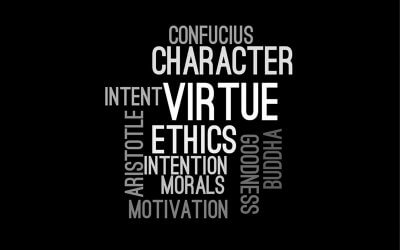Discover how understanding the limitations of averages and embracing probabilistic thinking can improve decision-making and risk management in business.

Are you ready for the Talent Crunch?
Companies are looking to hire! According to Vistage research, “The most notable finding from the December survey is that more than two thirds (67%) of small businesses reported plans to increase their workforce in the year ahead, up significantly from 55% in November. These expansion plans among small businesses are the highest since February of 2018.”
At the moment, from what I hear, finding the “right” people is hard. That is because of COVID. People will not:
- Leave current employment. With COVID, employees are staying put for the moment as the risk of moving is too significant. Everyone is aware of a “last in, first out” bias, so no one is ready to take the risk until things improve.
- Move. With COVID, employees are unlikely to take jobs in new cities. That is not to say people aren’t moving; they are, but usually back to where they came from, with support systems there. Baby boomers are moving to some excellent early retirement locations. However, average employees are unlikely to move for a job as there is too much risk involved in incurring up and moving expenses when the job is uncertain, and they may have no support structure.
- Take large risks. There is enough risk right now from COVID, and the economic uncertainty that most people will not take on more for a situation that they feel is very risky.
Current expectations are that we may hit COVID herd immunity in July, with the recovery starting in May or June. If that is the case, businesses will benefit from the pent-up demand that COVID has caused. Thus, we can expect employees to adjust their risk profile and start job hunting and moving just as companies increase their employment demands from Q2 onwards.
What are the employees looking for?
Purpose. For many, COVID has brought home their mortality and causing them to ask if what they do matters. Thus, if the company has no core purpose or “Why?”, or the core purpose doesn’t align with the employees’ purpose, the employees will move to those companies where the core purpose aligns.
Empathy. Many people will feel that their employers/bosses didn’t treat them well during COVID or showed insufficient compassion. They may have had to work through challenging homeschooling or ill parents/spouse with their employer making little allowance.
Living Core Values. Many companies have claimed to have Core Values, but when they are just words on a wall. During COVID, many organizations’ behavior has shown employees that their Core Values are just words and not beliefs, and not living your core values will drive employees and prospects away.
Opportunity. Since we are all mortal and life is fleeting, not only do employees want to work where they believe in what they are doing, but they want to realize their potential. Employers that show no interest in an employee’s career development and personal requirements will find those employees departing.
Character. As a result, employees will look for those companies who have always stated their Core Purpose and Values rather than those who have suddenly “found religion” and hoping that their new statements will make a difference like a fresh coat of paint.
McKinsey research showed that of employees:
- 82% believed it was important for the company to have a purpose;
- 72% thought that purpose should have more weight than profit;
- 62% believed that the company should have a purpose statement; and
- 42% said that their organizations’ purpose statements drove impact.
So, where does your organization fall? If you don’t have a purpose statement that is driving impact, how will you fare in the looming talent crisis? As I have often said, “How you behave during this crisis will define you for a decade or more.”
Here are some questions to ponder.
- Do you have a clear purpose?
- Can you say in one sentence what your organization is passionate about?
- Why does the organization exist?
- What are your Core Values, and can you point to those that live them and where they are part of your folklore?
If you can’t answer these, then the Talent Crunch is going to hurt! People will leave for places where they feel their purposes align and people live with similar Core Values. As the economy recovers and demand picks up, most companies will need more people to meet the challenges. If you don’t have enough and cannot hire the type you need, you will be in trouble.
If you don’t have a Core Purpose or Core Values, then you are attracting three basic types of employees:
- Walking dead. Can’t get a job anywhere else
- In Transition. They need a job, so they will work for you until something better comes along.
- Don’t care about a Why. These people do have a Why, but it is usually money and nothing else. At any time they feel they are not getting enough, they are gone. Real mercenaries and not good if you ever expect to hit a rough patch in the future.
If you don’t understand your Why, Simon Senik’s video below will put it better than I ever could.
Remember, a Core Purpose is a deep reflection on your corporate identity—what you really stand for—which may well lead to material changes in your strategy and even your governance. If you don’t have a Core Purpose and Core Values but will start defining them now, I would offer some suggestions.
- Get a coach or facilitator to help. Discussions over this can easily get bogged down. Many times, everyone will look to the business owner for guidance, which may be okay. But if the business owner comes up with a bad Why, e.g., profit, will anyone challenge?
2. Don’t make profit your Why, for some of these reasons:
- No one cares but shareholders, and generally, they are not the ones operating the business.
- Your customers and suppliers are not impressed that “making a profit” is your Why, as that implies you will take advantage of them.
- If profit is your why then everyone’s only interest is making money. Thus, anything that will make money is okay. When the company hits trouble, no one will stay and help; they are only there for the money.
- Remember Jim Collins’ statement about Core Values, “you are willing to lose money than breach your core values.” So, once you determine, make sure your leadership team and most of your employees can live them. If not, they need to go, as they are not “the right people.”
If you have an excellent Core Purpose and held Core Values, put them on your website, in your recruiting materials, and make sure you live your core values. You will be able to attract some great talent in the times ahead.
Copyright (c) 2021 Marc A. Borrelli
Recent Posts
The “Flaw of Averages” Causes Havoc for Businesses
What is Your Strategy, In a Sentence?
If you are banking on the vaccine returning us all to “normal” quite quickly, in the famous words of Dr. Akande, “Hope is not a strategy.” Your organization should be preparing a well-defined strategy for 2021 and beyond. Once you have this strategy, the ultimate question: can you clearly articulate it in one sentence? Distilling your strategy into a single sentence is a powerful tool, both for your legacy and your team effectiveness. Not sure where to start? I offer a plug-in formula to set up your strategy sentence.
Character Matters
“It’s easier to hold to your principles 100% of the time than it is to hold to them 98% of the time.” — Clayton Christiansen. I have often written about the importance of a company’s Core Values. That’s because no matter what words you may have chosen as values, your organization’s Core Values are on display in how leadership and employees actually behave. As I’ve said before, how you have acted in the last twelve months will define your career for the next decade. Your character, and your company’s character, matters.
New Year’s Resolutions, Once More Unto the Breach
The holidays have been even quieter than normal, which has given me plenty of time to reflect on my New Year’s resolutions. Looking at 2021, I decided to use a completely new approach to lay out my goals. The result of my new approach? A highly-detailed, accountable, actually achievable plan for the next year (I think). Wondering what this process looks like?
To Vaccinate or Not to Vaccinate, that is the Question
What do your employees, peers, and leadership team think of the COVID-19 vaccine? Will you require the vaccine, or will you let employees make individual decisions? As a leader, you need to steer the discussion about vaccines in your organization with your Core Values in mind. No matter what strategy your organization takes, the most important factor is going to be how you communicate your decision.
3 Ways You Could be Undermining Your Core Values
Can you answer “Why does your organization exist? What are your core values?” Great. Now, would your latest entry-level employee give a similar answer? How about someone who has been at your company for a year? Your core values give your organization a guiding mission. Many organizations pay this idea lip service, but their true commitment to their core values was tested this year. As we close out 2020, there’s no better time to examine how your organization is approaching your core values.
Are You Prepared for 2021 With Enough Cash?
Companies don’t go bankrupt because they lose money; rather, they run out of cash. Where are we, heading into 2021? First, you can expect your cash to get tighter as we weather the current economic slowdown. Then, with a vaccine on the horizon, you will need to be positioned for growth. If you don’t have the cash you need, have you looked at how you can generate the cash internally? More on how to improve your cash conversion cycle…
Tony Hsieh, a Corporate Culture Icon, RIP
In his work as Zappos CEO and elsewhere, Tony Hsieh believed, and proved, that culture is the most important thing in an organization. According to Hsieh, if you get the culture right, the rest will take of itself. How did Zappos do it? You can take a look at everything from the company’s interview questions, to “The Offer” to leave a position as a new hire. Hsieh believed that a company’s brand is just a reflection of the culture, and his legacy is felt across so many industries.
CEO, Try Thy Hiring System
How does your company hire? I’ve seen the good, the bad, and the surprisingly ugly hiring processes in my career. From the HR email mix-ups to the interviewer watching the World Series while I responded to his questions, I’ve learned that you can tell a lot about an organization simply by examining the hiring experience. Are you chasing away the kind of people you need at your company?
What is Leadership?
What is it, exactly, that great leaders do? There are plenty of overused adages about “leadership” in business. It’s worth examining the tropes around leadership, plus the traits of the leaders who actually leave a mark. Great leaders are forged through adversity, and they leave a legacy. What does that look like in your organization?










